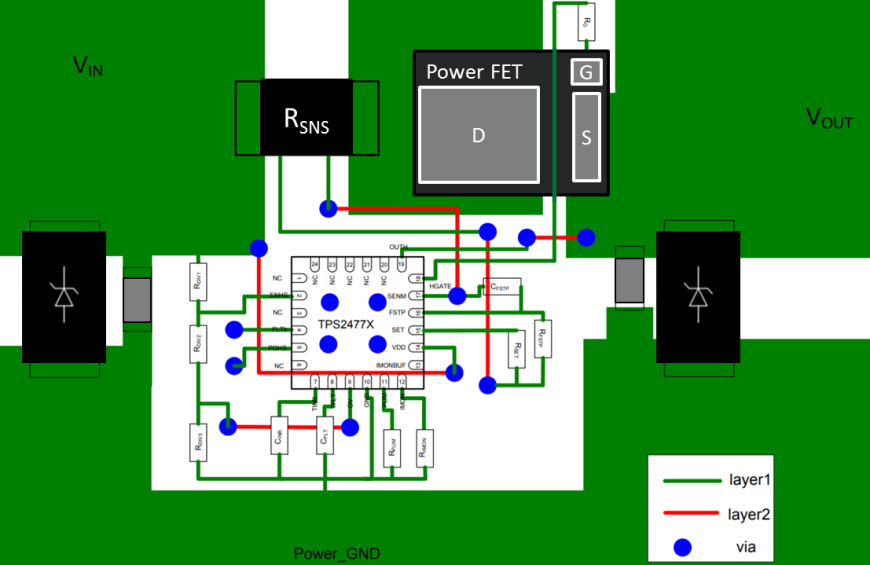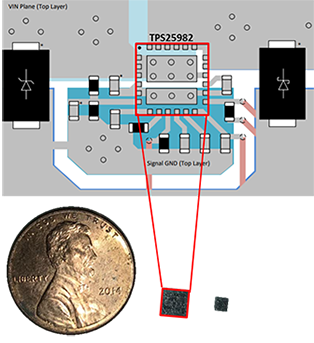SSZT446 june 2019 TPS1663 , TPS2595 , TPS25982
Do you still remember what it was like have dial-up internet? If not, here’s an audio snippet that may jog your memory! It was only a few years ago that you had to wait 10 minutes for someone to get off the phone before you could log in to your AOL Instant Messenger account, which probably took another five minutes with the typical 40-kbps transfer speeds. Now, even though we can download high-definition videos in seconds and have high-speed internet access in almost any developed area, we still want more data and faster bandwidth. And exciting innovations from data centers to semiconductors are delivering.
Increased bandwidth demands have made power density more important for electronic equipment like servers, routers and switches as circuit board space becomes more constrained. As a result, power integrated circuits (ICs) must pass more power (with a lower on-resistance [RON]) in a smaller footprint. Often this relationship between RON and footprint size is inversely related – optimizing one will worsen the other.
One subset of power ICs that has seen significant innovation in recent years is the hot-swap controller. Historically, external metal-oxide semiconductor field-effect transistor (MOSFET) hot-swap controllers have been a very popular power-path protection solution. However, the footprint for such a solution can be quite large given the need for an external sense resistor and power MOSFET. As shown in Figure 1, a hot-swap solution can take up a significant amount of board space.
 Figure 1 An External MOSFET Solution
with the TPS2477x Hot-swap Controller
Figure 1 An External MOSFET Solution
with the TPS2477x Hot-swap ControllerDecreasing the package size of these ICs will increase the RON, which will worsen the power performance. However, with TI’s proprietary processes, it is possible to optimize both parameters and achieve superior power density in a very small footprint. Figure 2 shows the TPS25982 – a new 24-V, 15-A eFuse that comes in a 4-mm-by-4-mm package.
 Figure 2 TPS25982 (Center) and TPS2595
(Right) Size Comparison
Figure 2 TPS25982 (Center) and TPS2595
(Right) Size ComparisonFor even smaller footprint solutions, the TPS2595 eFuse comes in a 2mm x 2mm package and for higher voltages, the TPS1663 eFuse supports up to 60V, as shown below in Table 1.
| Device | Voltage | Current | RON | Package |
|---|---|---|---|---|
| TPS25982 | 2.7 V-24 V | 15 A | 3 mΩ | 4-mm-by-4-mm quad flat no-lead (QFN) |
| TPS2595 | 2.7 V-18 V | 4 A | 34 mΩ | 2-mm-by-2mm QFN |
| TPS1663 | 4.5 V-60 V | 6 A | 31 mΩ | 4-mm-by-4mm QFN |
As overall power demands increase in the market, board space becomes more and more valuable. As a result, optimizing power efficient solutions in a small footprint will be something all power designers will have to consider.